Table of Contents
Bonsai plants are very beautiful. You will always get a nice relaxing feeling whenever you look at a bonsai plant.
When we talk about the most beautiful bonsai plants, there are several different species of bonsai plants that come into the discussion.
One of them is the Korean hornbeam bonsai plant.
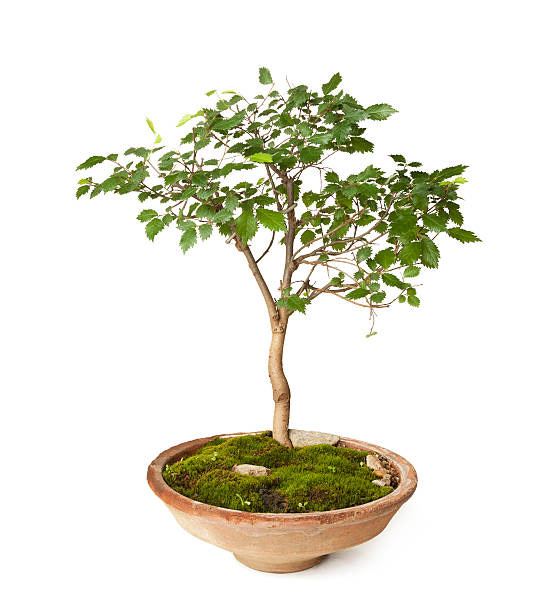
If you are a bonsai enthusiast and want to learn more about the Korean hornbeam bonsai, then keep reading because this article is for you!
We have covered every single thing you need to know about the Korean hornbeam bonsai plants.
| Scientific name | Carpinus Turczaninowii |
| Average height | 20 to 30 feet |
| Average spread | 12 to 15 feet |
| Origin country | Korea |
| Flower bloom time | April |
| Family | Betulaceae |
| Leaf | Evergreen |
| Water | Moderate |
| Sunlight | Part shade |
| Maintenance | Low |
Can Korean hornbeam be bonsai?
Yes, Korean hornbeam can be bonsai.
If the question in your mind is whether a Korean hornbeam plant can be grown as a bonsai plant or not then the answer is YES.
Korean hornbeam can be grown as a bonsai plant.
Even historically, the Korean hornbeam is considered a bonsai plant. Many bonsai enthusiasts love the Korean hornbeam bonsai because it just looks so much relaxing and beautiful.
Korean hornbeam bonsai are taken care of like any other species of bonsai plants and this leaves us with no doubt that Korean hornbeam plants are bonsai plants.
Scientists, bonsai enthusiasts, and everyone has also been working on the Korean hornbeam bonsai plants for years.
Korean hornbeam bonsai history
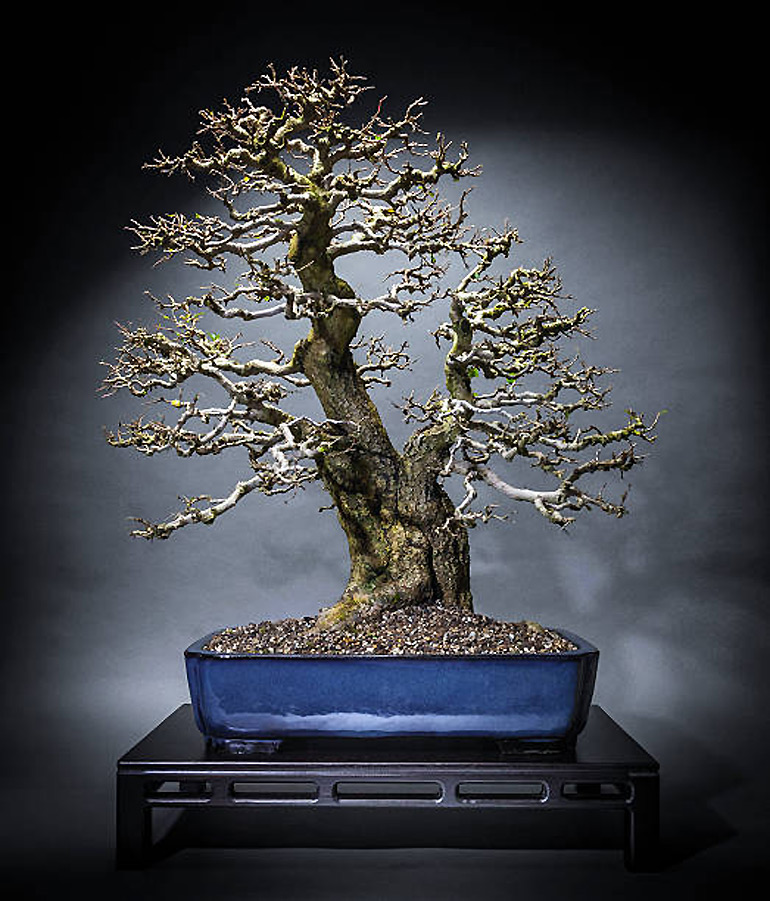
Do you want to learn more about the history of the Korean hornbeam bonsai plant? Like from where this plant originates from & how it all started?
Well, the Korean hornbeam bonsai plant originates from Asia. More specifically, this bonsai plant is native to Asia and North America.
Since the discovery and classification of the Korean hornbeam bonsai plant, scientists have given it a scientific name which is Carpinus coreana.
Historically, the reason why the Korean hornbeam bonsai plant is so popular is that it has a very ramified growth pattern and has small leaves.
However, you also need to keep in mind that the Korean hornbeam is a slow-growing bonsai plant. It might take twice as long as other species of the bonsai plant to grow a similar size trunk.
Since the Korean hornbeam bonsai plant is hearty and slow-growing, it is a perfect choice for beginners & every other bonsai enthusiast.
This tree gives you a lot of time to get used to it and learn how to train it.
Korean hornbeam bonsai care
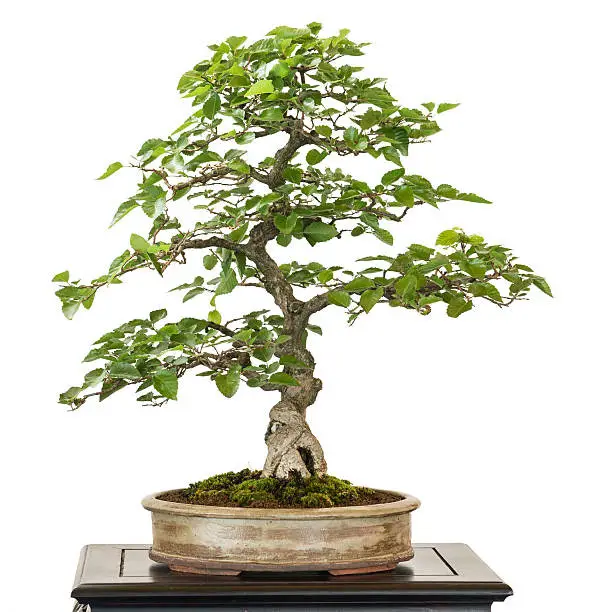
If you want to successfully grow a Korean hornbeam bonsai plant, then you must know how to take good care of it.
Growing a Korean hornbeam bonsai is not very difficult because there is just a small amount of work required. However, it does require a lot of discipline, patience, time, focus, energy, and effort.
The only main difficulty is the lack of knowledge.
A lot of people don’t know how to properly take care of the Korean hornbeam bonsai plant. They don’t how to water, prune, fertilize, or repot it the right way. They don’t know which temperature is suitable for them, etc.
Due to this lack of knowledge, they fail to take care of their plant. Eventually, it fails to grow and die.
If you will read this complete article, you will have complete detailed knowledge about growing a Korean hornbeam bonsai plant.
We are going to guide you about everything related to the Korean hornbeam bonsai plant care. Step-by-step and one thing at a time.
Let’s start it from right here.
Korean hornbeam bonsai temperature
The first most important thing for a Korean hornbeam bonsai plant is the temperature under which you keep it.
Different plants have different optimal ranges of temperature under which they can survive and grow effectively.
Any fluctuation in that temperature results in stunted growth or even complete death of the plant in worst cases.
So, what is the best temperature for the Korean hornbeam bonsai plant?
Well, the Korean hornbeam bonsai plant needs a dormant period for good health. For this purpose, the Korean hornbeam bonsai plant must be kept outdoors throughout the year.
However, there are a few exceptions for special cases. You need to protect your Korean hornbeam bonsai plant from extreme temperatures (be it summer or winter).
In winter, you need to protect your plant if it is freezing weather outside. In summer, you need to protect it from the very harsh sunlight and intense heat when it’s the driest time of the year.
Similarly, you need to protect your plant from the strong winds as well.
Korean hornbeam bonsai fertilizer
The next important factor is the fertilization of the Korean hornbeam bonsai plant.
Fertilization plays a very crucial role in improving the survival and growth of your Korean hornbeam bonsai plant.
But if used incorrectly, fertilizer can also make your Korean hornbeam bonsai plant sick. It can stop its growth or even kill your plant. Therefore, you need to learn about fertilizing the Korean hornbeam bonsai the right way.
Since your bonsai plant is inside a small pot and not the ground, you will need to supplement it with nutrients (fertilizer) at the right time.
Experts say that after the first bud, the Korean hornbeam bonsai will need weekly feeding for the first month. Then, in late summer, you can switch it to every 2 weeks.
You are recommended to use a completely organic fertilizer at half strength.
Experts also recommend that you should not feed the Korean hornbeam bonsai for 2 months after repotting the plant.
Korean hornbeam bonsai pruning
Pruning the Korean hornbeam bonsai plant is very necessary for its maintenance and proper growth.
However, a lot of people make many mistakes while pruning their Korean hornbeam bonsai.
So, what is the right way?
Well, you can wire your Korean hornbeam bonsai plant from spring till autumn. You may also need bark protection for preventing any damage. Generally, Korean hornbeam bonsai is a sturdy plant so it can tolerate hard pruning even if done repeatedly.
If you are planning to do some major developmental pruning then do it in late winter and before the bud burst.
You can trim the new growth to the point that looks attractive to you but please avoid removing the entire new growth.
Regular pruning and trimming of the Korean hornbeam bonsai will help you keep the plant shorted and thicken its trunk.
Therefore, do follow our instructions for better and long-lasting results.
Korean hornbeam bonsai repotting
Repotting of the Korean hornbeam bonsai plant is a very crucial phase.
If you will do it the right way, you can flourish the growth of your plant and improve its health.
But if you will do it the wrong way, you will end up causing severe damage to your plant. Perhaps, a lot of people end up killing their plants due to incorrectly repotting the plant.
You have to take care of a lot of things.
Always make sure to re-pot the Korean hornbeam bonsai plant once every 2 to 3 years.
The best season to do that is early spring so your plant can rapidly start its growth again and become strong and stable.
However, many experts suggest that the best time for repotting is mid-summer because the Korean hornbeam bonsai plant is most stable and less fragile at that time.
You are also recommended to use basic bonsai soil for repotting the Korean hornbeam bonsai plant.
These plants love a deep pot and do not like a lot of root pruning.
Korean hornbeam bonsai pests and diseases
Pests and insects are a part of nature. They can attack your Korean hornbeam bonsai plant at any time!
If you will not take appropriate measures to protect your Korean hornbeam bonsai plant from pests and disease, then they will just eat away your plant and kill it.
When it comes to the Korean hornbeam bonsai plant, there are only a few types of insects that attack it.
Fungal attacks can leave leaf spots on your Korean hornbeam bonsai. Canker is another disease caused by different fungi. It kills the infected branches and if it infects the trunk, your whole tree can die.
If your Korean hornbeam bonsai tree is severely infected then its chances of recovery are quite low. In such a case, you are recommended to prune the infected branches.
Now you must be thinking that how can you prevent your Korean hornbeam bonsai plant from pests and disease?
Well, the key is proper watering. Maintaining a not-too-wet and not too dry environment will be the key to preventing fungal attacks on your plant and keeping it healthier.
Korean hornbeam bonsai soil types
The quality of soil is very important for the health & growth of your Korean hornbeam bonsai plant.
So, which type of soil does the Korean hornbeam bonsai plant likes?
Well, the Korean hornbeam bonsai plant prefers loamy soil.
If you are repotting the Korean hornbeam bonsai plant, then you need to use the basic bonsai soil.
Make sure to fertilize the soil regularly. It will keep the soil enriched with nutrients and help your Korean hornbeam bonsai plant to flourish and grow rapidly.
Korean hornbeam bonsai watering
Like we told you in the above section that correct watering is the key to keeping your Korean hornbeam bonsai plant healthy and flourishing.
Both underwatering and overwatering are problematic for your Korean hornbeam bonsai plant.
You need to water this bonsai plant in the right amount and at the right time.
The Korean hornbeam bonsai plant requires moderate watering. They can even tolerate mild neglect in watering.
The thumb rule is that you have to prevent the soil from drying out completely.
Whenever you feel the soil has dried up, you can water the plant. Especially during the growing season, this can happen on daily basis.
Avoid over-watering the plant.
Follow these watering instructions and your plant will stay healthy and safe from different diseases.
Korean hornbeam bonsai sunlight requirements
Do you know how do plants obtain their food?
Well, they absorb sunlight and use it for preparing their food.
Sunlight is very important for your Korean hornbeam bonsai plant. It is matter of life or death for the plant.
So, what are the sunlight requirements of your Korean hornbeam bonsai plant?
Well, this bonsai plant will need protection from intense sunlight, especially in the afternoon.
Korean hornbeam bonsai plant grows well in open habitats with total shade.
You need to protect it from freezing weather and extremely intense sunlight.
For the rest of the year, the plant will be okay outside. Give it a few hours in sun. a combo of morning sun and afternoon shade will be a better option.
Is Korean hornbeam fast-growing?
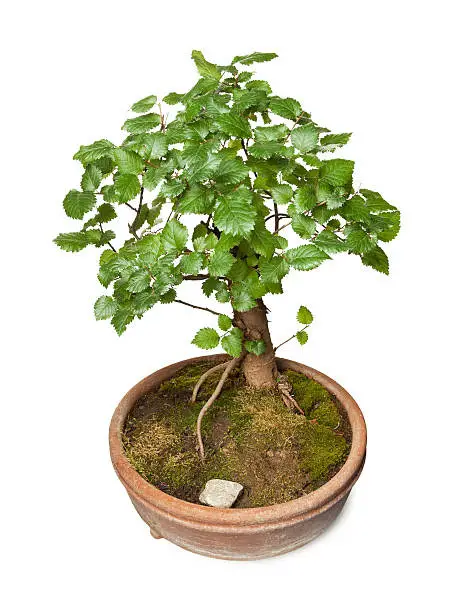
Do the Korean hornbeam bonsai plants grow faster or slower?
Well, experts say that the growth of hornbeam species of plants varies greatly. It means that they have different growth rates and patterns.
They say that the Carpinus coreana (Korean hornbeam bonsai) has small leaves and shows ramified growth pattern. However, its growth speed is slower.
Generally, this species of hornbeam might take twice as long as the other to grow a similar trunk size.
Because of its slow growth rate, professionals say that the Korean hornbeam bonsai plant is a good choice for beginners.
It gives them more time to get used to the plant and learn to train it in a much better way.
How long does it take to grow a Korean hornbeam bonsai?
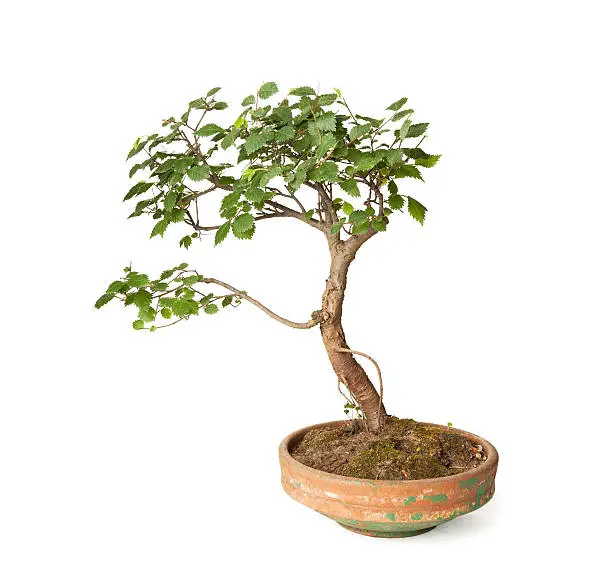
Here’s what you need to know about the growth time of the Korean hornbeam bonsai plant:
The experts say that the fastest way to grow Korean hornbeam bonsai is using cuttings. The Korean hornbeam bonsai plants grown from cuttings are capable of flowering within 2 or 3 years.
Whereas, the Korean hornbeam bonsai grown from the seedlings can take as long as up to 7 years or more for flowering.
Does the Korean hornbeam lose its leaves in winter?
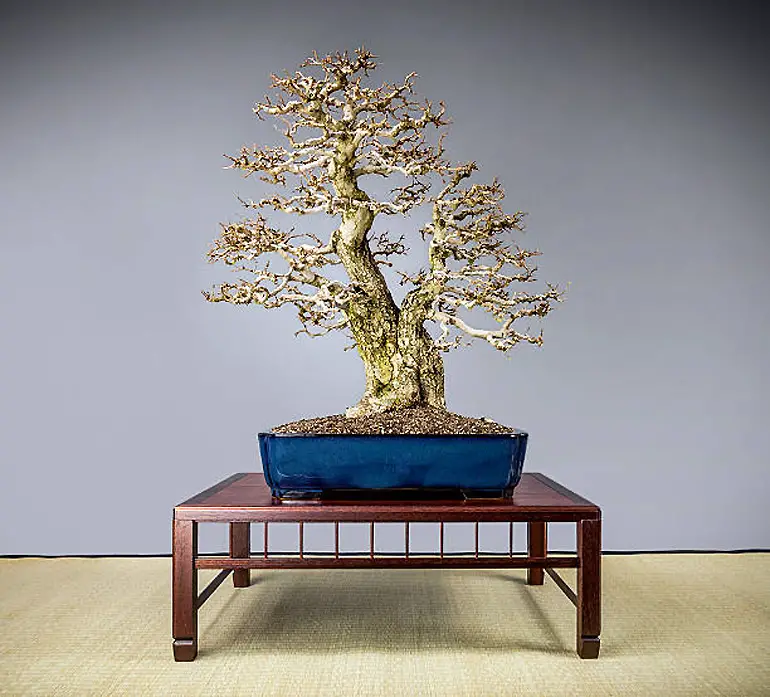
Yes, if your Korean hornbeam plant is losing its leaves in winter, then it is completely normal.
All the plants do that. Autumn is the natural season for plants to shed their old leaves and grow fresh leaves in the spring.
So, there’s nothing to worry about it as it is a completely natural and normal phenomenon.
How to germinate Korean hornbeam seeds?
Do you want to germinate the Korean hornbeam seeds but don’t know how to do it?
It is very easy and you can learn it right now if you keep reading.
Here are the guidelines you need to follow:
- Soak the Korean hornbeam seeds in lukewarm water for 6 to 8 hours.
- You can place the seeds in a paper cup or bonsai pot that has good quality bonsai soil mixture.
- Thoroughly water the soil before planting the Korean hornbeam seeds.
- Now sow the seeds and keep them 1/4” deeper in the soil.
- After planting the seeds, cover that pot with plastic and place it at a bright and warm location where the temperature is preferably (75° to 85° F).
- The seeds cannot tolerate dry conditions. Thus, you need to water and mist them regularly. Moist conditions will help the seeds to survive and grow rapidly.
- You can place 2 to 3 seeds in each container. But when the first set of true leaves appears, you can pinch off the undesired seedlings.
![Pittosporum Bonsai [Pittosporum Tobira]](https://www.bonsai-express.com/wp-content/uploads/2022/05/Pittosporum-Bonsai-365x200.jpg)
![Sorbus Bonsai [Sorbus Aucuparia]](https://www.bonsai-express.com/wp-content/uploads/2022/05/Sorbus-Bonsai-365x200.jpg)
![Tsuga Bonsai [Tsuga Canadensis]](https://www.bonsai-express.com/wp-content/uploads/2022/05/Tsuga-Bonsai-365x200.jpg)
![Tamarix Bonsai [Tamarix Ramosissima]](https://www.bonsai-express.com/wp-content/uploads/2022/05/Tamarix-Bonsai-365x200.jpg)